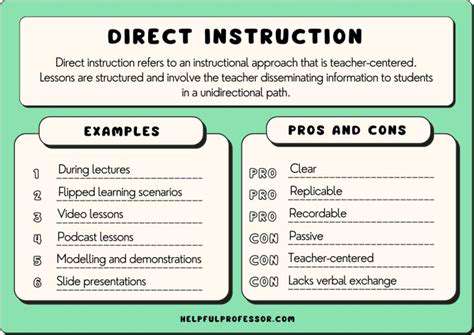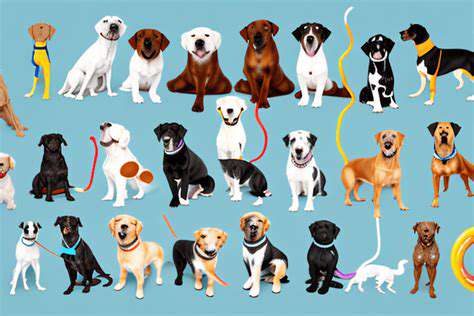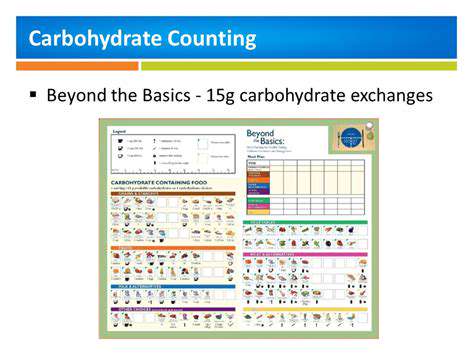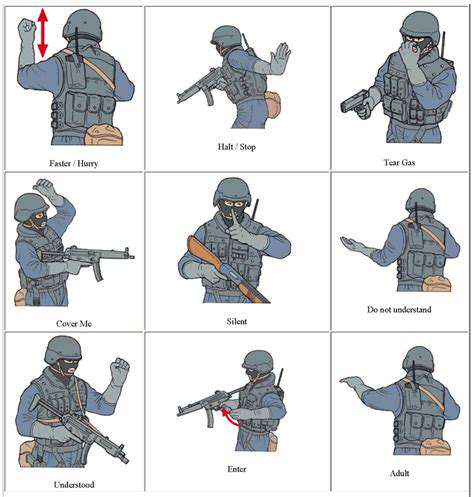The Power of Play: Teaching Basic Obedience with Toys

Utilizing Toys for Basic Obedience Commands
Encouraging Engagement with Toys
Toys can be powerful tools for engaging your dog in learning basic obedience commands. By associating positive experiences with the toy, you're establishing a strong foundation for future training. Using a favorite toy during training sessions can make the experience more enjoyable for both you and your furry friend, fostering a positive association with learning. This, in turn, motivates them to participate enthusiastically and learn more effectively.
The key is to use toys strategically, ensuring they're appropriate for the dog's size and breed. A well-chosen toy can capture your dog's attention and keep them engaged throughout the training process. This proactive approach not only makes learning more enjoyable but also strengthens the bond between you and your dog.
Utilizing Toys for Sit
When teaching sit, use a toy as a lure. Hold the toy just above your dog's nose and slowly move it back over its head. As their head follows the toy, their bottom will naturally lower into a sit position. Immediately reward this desired behavior with a treat and praise. Repeating this process consistently, associating the toy movement with the sit command, reinforces the desired action.
Consistency is key. The toy acts as a visual cue for your dog, helping them understand the desired action. Gradually, reduce the reliance on the toy, transitioning to verbal commands as your dog masters the association.
Employing Toys for Stay
To teach stay, use a toy as a distraction and a reward. Place the toy a few feet away from your dog while they are in a sit position. Give the stay command. If they remain in the sit position, reward them with the toy, reinforcing the stay command. Gradually increase the duration of the stay and the distance of the toy to make the exercise more challenging.
Always be patient and understanding. Your dog may need several repetitions before they fully grasp the concept. Positive reinforcement, using the toy as a reward, is crucial for success in this training exercise.
Leveraging Toys for Come
For the come command, use a favorite toy as a powerful incentive. Hold the toy and call your dog's name, using an enthusiastic tone. As they come to you, reward them immediately with the toy. This positive association with coming to you when called will make the command more appealing and effective.
The toy becomes a strong positive reinforcement, making the come command more appealing to your dog. Gradually, you can decrease the reliance on the toy as a reward, transitioning to simple praise and petting as your dog masters the command.
Rewarding Good Behavior with Toys
Using toys as rewards is an excellent strategy for reinforcing good behavior during training sessions. After your dog successfully completes a command, reward them with a toy as a tangible sign of appreciation. The association of positive behavior with receiving a toy makes the training experience more engaging and encouraging for your dog.
This method strengthens the bond between you and your dog by making training a fun and rewarding experience. This approach can motivate your dog to learn and perform commands with enthusiasm and eagerness.
Enhancing Recall with Toys
Using a toy as a lure can significantly enhance your dog's recall. When you want your dog to come to you, hold a toy and use a cheerful tone to call them. As your dog approaches, reward them with the toy. This positive reinforcement creates a strong connection between the recall command and the reward, ultimately making recall more reliable and responsive.
This method helps your dog understand that coming to you when called means getting something enjoyable, strengthening the come command and building a positive association with the recall.
Safety and Choosing the Right Toys
When using toys for training, prioritize safety. Ensure the toy is appropriate for your dog's size and chewing habits to prevent any potential damage or injury. Choose toys that are durable and won't easily break or fall apart during training sessions. Supervise your dog closely while they are playing with toys during training to prevent accidents.
Consider your dog's individual needs and preferences when selecting toys for training. A dog's favorite toy will naturally make the training process more enjoyable. This approach ensures the training experience is both effective and safe for your dog.
Read more about The Power of Play: Teaching Basic Obedience with Toys
Hot Recommendations
- The Impact of Early Socialization on a Dog's Interaction with Other Animals
- Car Travel and Puppy Socialization: Making the Journey a Positive Experience
- The Importance of Early Environmental Exposure for Puppy Development
- Taking Your Puppy to the Vet: Positive Socialization Strategies
- Making Training a Positive Experience for Your Puppy
- Public Transportation and Puppy Socialization: A Step by Step Guide
- Safe Socialization: Allowing Others to Pet Your Puppy
- Helping a Puppy Who Struggles with "Stay"
- Positive Puppy Interactions: Making Meetings with New Friends Fun
- No Treats Needed? Training Basic Commands with Verbal Praise











